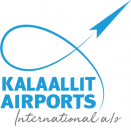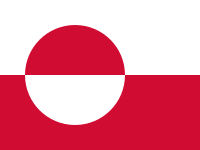Americans, who can now fly direct to Greenland, test its tourism industry

Andrea Sachs, (c) 2025 , The Washington Post
NUUK, Greenland - A dark SUV pulled into a shopping center illuminated by the midnight sun. Tour operators René and Ulrikke Andersen jumped out of the vehicle and approached a pair of tourists with an offer. Two people had signed up for that evening’s whale-watching cruise, but the guides needed to fill a few more seats. Were we interested in going?
Yes, we answered, but we are those two guests. The Andersens sped off on their quest to rustle up more bodies.
Though more than 160 tourists had just landed on United’s new flight from Newark airport, Malik Marine Tours struggled to corral more participants. Close to cast-off time, the tour company canceled the excursion.
Greenland is new to this scale and style of tourism, and it showed. Interest in the country is spiking, for political and recreational reasons, putting pressure on the country’s budding tourist infrastructure.
Visitors are coming, whether Greenland is ready or not.
Before United’s June 14 maiden journey, travelers from the United States would have to fly to Copenhagen or Reykjavik before recrossing the Atlantic to the Arctic island. Two airports - Kangerlussuaq and Narsarsuaq, both former U.S. military bases built during World War II - could accept international visitors arriving on large jets.
In November, Greenland opened a third jet-friendly international airport. Nuuk, the capital about 1,850 miles northeast of Newark, took over from Kangerlussuaq as the gateway to Greenland. Two more international airports are slated for 2026, with new facilities in Ilulissat and Qaqortoq.
“New York to Nuuk has been a dream for many years,” said Tanny Por, head of international relations at Visit Greenland, the official tourism office. “It’s exciting to see Greenland being more connected to the world because that means locals are more connected as well.”
United has company on the tarmac. Scandinavian Airlines, Icelandair and Air Greenland recently launched flights from Europe to Nuuk. The big planes are so novel that residents will sometimes park on the road overlooking the runway, binoculars in hand.
“Some people are still quite excited to see it land,” said Elise Bruun, founder of Travel by Heart, a travel agency in Nuuk.
While many European destinations are wrestling with overtourism, Greenland is trying to expand its industry - responsibly, sustainably, thoughtfully. A 10-year plan released this year by Visit Greenland includes extending the tourism season beyond the peak months, spreading tourism to communities beyond Nuuk and Ilulissat and doubling the number of tourists by 2035.
According to a Visit Greenland report, the country welcomed an estimated 149,000 international visitors last year, including 54,000 arrivals by air. (The others sailed in on cruise ships.) United said demand has been strong for its seasonal Nuuk flights, which end for the year on Sept. 24. The carrier plans to return next summer.
With the increase in air service and seat capacity, Jacob Nitter Sørensen, CEO of Air Greenland, anticipates many more visitors this year. But the rise will be gradual.
“It’s going to be a building block system for years,” Nitter Sørensen said. “Growth is not going to explode, and we are not going end up in a situation like Iceland, where suddenly the whole country is just overwhelmed with hordes of tourists.”
In recent years, Greenland has piqued the interest of some people more concerned with foreign policy than polar events. During both of his terms, President Donald Trump has pitched the idea of annexing Denmark’s autonomous territory. On a March visit, Vice President JD Vance criticized Denmark’s stewardship of the island and implied that the country should become independent.
This summer, a movement of a different nature is taking place.
“We are seeing so many tourists,” Bruun said. “It’s coming so fast.”
Nuuk, the new hot spot
At Newark airport this summer, the travelers bound for Nuuk stood out. For one, they were dressed in winter gear - fleece jackets, hiking pants, insulated boots - despite the East Coast heat. They were also giddy.
“Welcome to Greenland,” the pilot said over the intercom as the plane bumped down on the brand-new runway. “First time in my career I’ve said that.”
In the customs line, a knot of United interns jabbered about their plans to stay up all night and catch the flight back to Newark the following morning. Other visitors brandished meticulously crafted itineraries.
Scott Kane, a former instructor with the National Outdoor Leadership School in Wyoming, said Greenland is not “easy tourism, whether it’s the short season or the challenging weather conditions. Or maybe it’s the mosquitoes.” (The biting bugs are notorious for their overzealousness.)
For his first trip there, Kane and his party of three were going to spend 22 days on the west coast. They scheduled a day in Nuuk to buy last-minute supplies before flying north to Kangerlussuaq, the starting point of the Arctic Circle Trail, a 100-mile trek from the portal to the world’s second-largest ice cap to the Arctic Ocean.
“The United flight made the logistics so much easier,” Kane said of the direct flight to the country’s largest city, where they could stock up on provisions without depleting the grocery shelves of smaller communities.
Because ice covers about 80 percent of Greenland, the country does not have an equivalent of Ring Road in Iceland or the Glenn Highway National Scenic Byway in Alaska. In fact, Greenland doesn’t have a national roadway or railway system at all. You can drive locally but not between most towns or regions.
“Our roadways are in the sky and sea,” Por said. “Fjords, mountains and the Arctic climate stand in the way of a drive system.”
For domestic travel, residents and visitors rely on planes or helicopters; private boats, which outnumber cars; or the passenger ferry, which stops at a dozen ports along the west coast. Snowmobiles and dog sleds are pulled out of the garage for shorter routes.
Visitors with limited time or budgets will stick close to Nuuk, a newly minted tourist spot.
“We’re not used to having tourists in Nuuk every day,” Nitter Sørensen said. “Now suddenly it’s full of activity, and that’s due to the airport.”
Searching for whales, settling for waterfalls
Soon after the biweekly United flight departed for Newark, chatter about an impending storm in Nuuk started to mount.
“I’m quite excited to see what will happen tomorrow,” Bruun said.
With eight months of wintry weather, Greenlanders are a hardy (and hearty) bunch, accustomed to inclement weather and unruffled by disruptions. They often respond to unpredictable events with a “maybe.”
“In Greenland, we do this,” Bruun said, shrugging her shoulders, titling her head and flashing an impish smile. “We just don’t know, so you can’t do anything but sit down and relax.”
In the face of uncertainty, I boarded a whale-watching cruise with Malik Marine Tours for that afternoon. With temperatures expected to drop to the 30s and winds exceeding 40 miles an hour, it could be my only opportunity to see Greenland’s other summer visitors.
The Andersens’ little Finnish vessel bucked like a bronco in the choppy seas. We stopped to gaze at an iceberg before hightailing it to the site where, hours earlier, another outfitter had spotted humpback whales.
Fog engulfed us, erasing the landscape. Ulrikke and his son Malik Andersen, the captain, revised the plan. We were going to visit a puffin colony instead. The water was too rough, so they returned to the whale pursuit, searching closer to Nuuk’s coastline. We couldn’t see anything but grayness, so they ditched marine animals entirely. Malik steered the vessel toward the sound of rushing water and parked under a glacier waterfall.
Ulrikke fished out a small iceberg and broke it into cocktail-size pieces. He poured whiskey over the ice, and we drank to the storm, which was no longer a maybe.
A storm and a seamstress
The wind and rain battened down much of Nuuk. The airport halted all incoming and outgoing flights, domestic and international. Tour operators nixed outdoor excursions. With gusts that felt like a pair of strong hands, even walking was precarious.
Nuuk has enough indoor attractions to occupy at least one blustery day. In the Colonial Harbor, the Nuuk Local Museum covers centuries of history, from the founding of Nuuk in 1728 to last year, when the airport was “in full swing.”
In the same museum complex, Kittat, a costume workshop, teaches visitors about the construction and design of elaborate Inuit attire, which traditionally incorporates crocheted lace, beadwork, embroidered animal skin and seal fur. A collar alone can take 64 hours of sewing.
The cultural center limits guests to 10 minutes, a rule our group unintentionally flouted. Halfway through our hour-long visit, one of the seamstresses packed up the fabric samples and rolled the suitcase next door. She returned to her workstation and resumed sewing, occasionally frowning in our direction.
“We can only work Tuesdays and Thursdays without interruption from tourists,” said Sara Marie Berthelsen, a tailor and seamstress who repairs costumes and creates pieces for rent. “It would be good if we could employ a tour guide.”
Scrambling for a hotel room
Visitors with canceled flights didn’t have a free day.
If they were flying on Air Greenland, they had to return to the airport to consult with the airline agents about a new reservation. For many domestic travelers, such as the Kane family, a one-day delay turned into two.
“Greenland is not the place for people on tight schedules, who will be unhappy in poor weather or are in search of comfort and ease,” said Kane, whose group also missed a return flight to Newark because of delays in Ilulissat. (His post-trip review: “Can’t wait to return.”)
Though the early July storm was “an act of God” - code for “not the airline’s problem” - Air Greenland, per a long-standing policy, provided stranded passengers with vouchers for accommodations, food and cab fare. The staff also searches for lodging, not the easiest task with so few options. According to a Visit Greenland report from late 2024, there are 586 hotel beds, 357 hotel apartment beds and 96 hostel beds in and around Nuuk. One international flight can carry upward of 300 people.
“This an increasing problem because many tourists take up the hotel rooms,” Nitter Sørensen said. “In times of disruptions, it gets more and more difficult for our staff to secure rooms.”
The city has approved the construction of four new hotels, including two by the airport. Nitter Sørensen said he has not seen any cranes or heard any blasts by the airport.
“I don’t think they will be ready for the peak season of next year,” he said, “but definitely for 2027.”
With a freeze on all flights the day of the storm, everyone could stay where they were. However, the airport reopened the following morning, requiring the unexpected guests to hand over their keys for new arrivals.
Nitter Sørensen said the airline can arrange emergency lodging in these instances, setting up beds in the cafeteria of a ski lodge, an indoor playground or a conference center in Nuuk. During the early July tempest, 15 visitors on a fly-fishing vacation crashed on mattresses inside the airport. Nitter Sørensen described the venue as a “torture chamber” because an automated announcement repeatedly reminded passengers to not leave their luggage unattended. Despite the annoying lullaby, Nitter Sørensen said the travelers were pleased with their accommodations.
“They were really happy because the alternative was not very nice,” Nitter Sørensen said. “They would just have to wander around.”


